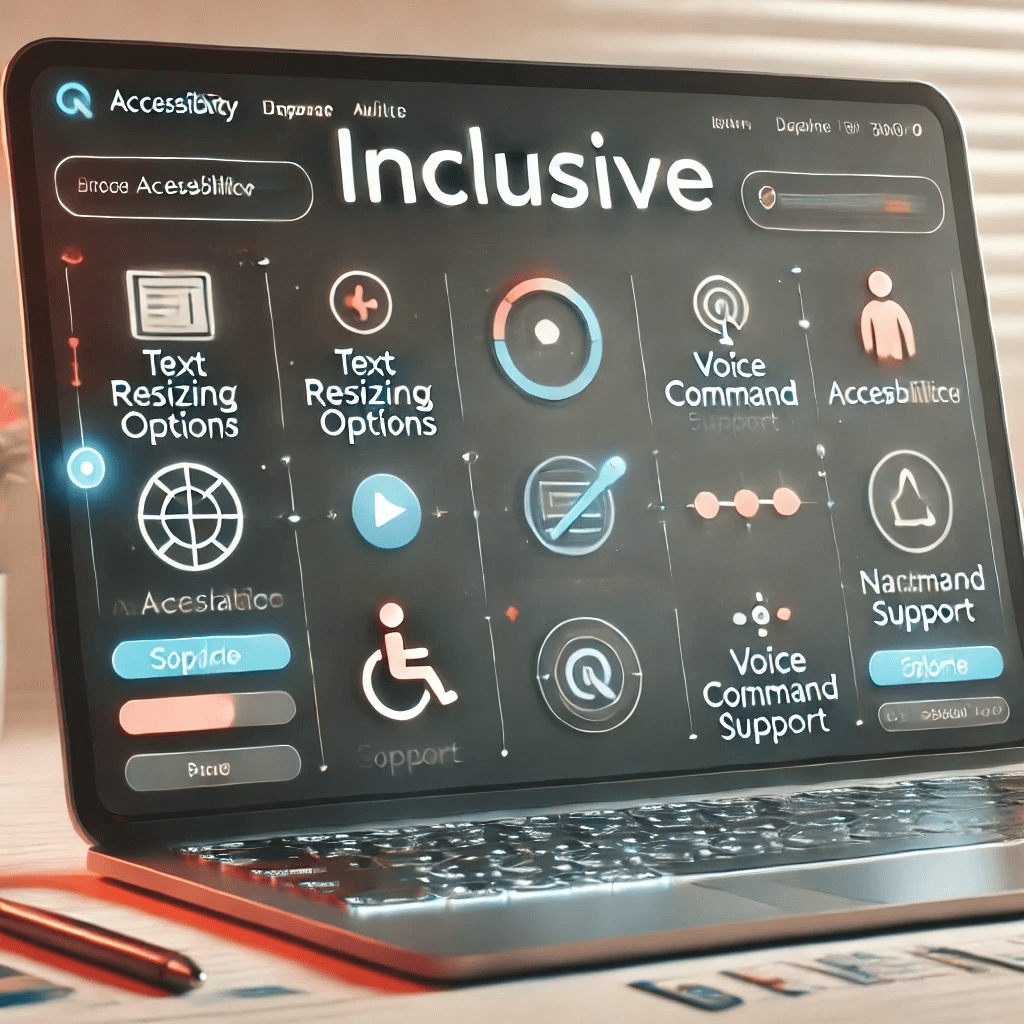Introduction
- Understanding Web Accessibility Standards
- Creating an Accessible Website Structure
- Optimizing Text for Readability
- Alternative Text for Images
- Keyboard Navigation and Accessibility
- Providing Captions and Transcripts for Multimedia
- Enhancing Form Accessibility
- Accessible Links and Buttons
- Improving Mobile Accessibility
- Testing Website Accessibility
- Continuous Accessibility Improvement
- Essential Website Accessibility Improvements for an Inclusive User Experience
- Conclusion
- Questions:
Ensuring website accessibility improvements helps create an inclusive digital experience for all users, including individuals with disabilities. A well-structured and accessible website design enhances usability, search engine ranking, and legal compliance with accessibility standards like WCAG and ADA.
By following essential web accessibility tips, such as adding alt text, optimizing keyboard navigation, improving color contrast, and providing captions for multimedia, businesses can ensure their websites are user-friendly and inclusive. This guide explores practical strategies to make websites more accessible for everyone.
Understanding Web Accessibility Standards
Key accessibility guidelines include:
- WCAG (Web Content Accessibility Guidelines) – International standard ensuring digital content is accessible.
- ADA (Americans with Disabilities Act) – Requires websites to provide equal access to individuals with disabilities.
- Common barriers include unreadable text, poor color contrast, missing captions, and keyboard navigation issues.
Why compliance matters:
- Improves user experience for all visitors.
- Reduces risk of legal issues from inaccessibility.
- Boosts SEO by enhancing usability and content clarity.
Creating an Accessible Website Structure
- A well-organized structure improves navigation and readability.
- Use clear, consistent navigation so users can easily find content.
- Implement proper heading hierarchy (H1, H2, H3) to organize information.
- Avoid cluttered designs that make reading and interaction difficult.
Optimizing Text for Readability
- Make content easy to read for all users.
- High-contrast color schemes improve visibility.
- Ensure text is resizable without breaking the page layout.
- Use simple, clear fonts (avoid overly decorative or tiny text).
Alternative Text for Images
- Alt text ensures visually impaired users understand images.
- Add descriptive alt text to every image.
- Avoid excessive use of text within images
Keyboard Navigation and Accessibility
- Ensure users can navigate without a mouse.
- Enable tab navigation for all site elements.
- Use visible focus indicators to highlight selected elements.
- Avoid keyboard traps in menus and forms.
Providing Captions and Transcripts for Multimedia
- Make audio and video content accessible.
- Add closed captions for videos to assist hearing-impaired users.
- Provide audio descriptions for visually impaired audiences.
- Include text transcripts for podcasts and voice content.
Enhancing Form Accessibility
Accessible forms ensure that all users, including individuals with disabilities, can easily understand and complete them. Improving form accessibility enhances usability and compliance with web accessibility standards.
- Forms should be easy to understand and complete – Use a clear structure with logical field organization.
- Label all form fields clearly and concisely – Ensure labels are descriptive and positioned close to their corresponding fields.
- Offer error messages to guide users – Provide helpful, specific error messages to assist users in correcting mistakes.
- Ensure forms can be completed entirely via keyboard – Allow tab navigation and avoid requiring a mouse for submission.
Improving form accessibility makes websites more inclusive, user-friendly, and compliant with accessibility guidelines.
Accessible Links and Buttons
- Improve clickability and navigation.
- Use descriptive link text instead of vague terms like “click here”.
- Make buttons large and easy to tap, especially for mobile users.
- Use high-contrast color combinations to enhance readability and accessibility.
Improving Mobile Accessibility
- Ensure websites work seamlessly on mobile devices.
- Use responsive design to adapt content for different screen sizes.
- Design buttons and links with a comfortable touch target size to improve usability.
- Avoid intrusive pop-ups that block content.
Testing Website Accessibility
- Regular testing helps maintain compliance and usability.
- Use automated tools like WAVE, Axe, or Lighthouse for quick checks.
- Conduct manual testing with screen readers like JAWS or NVDA.
- Get feedback from users with disabilities to identify real-world issues.
Continuous Accessibility Improvement
Website accessibility is an ongoing process, not a one-time fix. Continuous accessibility improvement ensures that websites remain inclusive, compliant, and user-friendly for all visitors, including those with disabilities.
- Keeping up with WCAG updates – Web Content Accessibility Guidelines (WCAG) evolve over time. Regularly updating your website ensures compliance with the latest standards.
- Regular accessibility audits – Conduct periodic audits using tools like WAVE, Axe, and Lighthouse to identify and resolve accessibility issues.
- Encouraging user feedback – Engage with users, especially those with disabilities, to gain insights on improving accessibility and usability.
By prioritizing continuous accessibility improvement, businesses can create a more inclusive and user-friendly digital experience for all.
Essential Website Accessibility Improvements for an Inclusive User Experience

Implementing website accessibility improvements ensures that all users, including those with disabilities, can navigate and interact with your site effectively. Accessibility not only enhances user experience but also improves SEO, usability, and legal compliance.
Key website accessibility improvements include:
- Provide descriptive alt text for images to ensure screen readers can convey meaningful information to visually impaired users.
- Ensuring proper keyboard navigation for users who cannot use a mouse.
- Using high-contrast colors for better readability.
- Providing captions and transcripts for multimedia content.
By prioritizing web accessibility tips, businesses can create a seamless and inclusive online experience for everyone.
Conclusion
Improving website accessibility ensures that everyone, regardless of ability, can access and interact with online content. By following WCAG guidelines, optimizing navigation, adding alt text, and enhancing readability, websites can boost user experience, SEO, and legal compliance. Website accessibility ensures that everyone, including users with disabilities, can navigate, interact with, and understand online content. An accessible website benefits not only individuals with visual, hearing, motor, and cognitive impairments but also improves overall user experience and SEO.
Questions:
Why are website accessibility improvements important?
Website accessibility improvements ensure that individuals with disabilities can navigate and interact with a site effectively. It enhances user experience, boosts SEO, and ensures legal compliance with WCAG and ADA guidelines.
What are some essential website accessibility improvements?
Key improvements include adding alt text to images, optimizing keyboard navigation, using high-contrast colors, and providing captions for videos to make content accessible to all users.
How can I make my website more accessible for visually impaired users?
Use screen-reader-friendly text, high-contrast color schemes, scalable fonts, and descriptive alt text for images to improve accessibility for visually impaired users.
How do web accessibility tips help businesses?
Implementing web accessibility tips improves customer reach, search engine rankings, and user retention, while also reducing legal risks related to accessibility compliance.
What tools can I use to test website accessibility improvements?
Popular tools include WAVE, Axe, Lighthouse, and NVDA screen readers to identify and fix accessibility issues for a more inclusive website experience.














